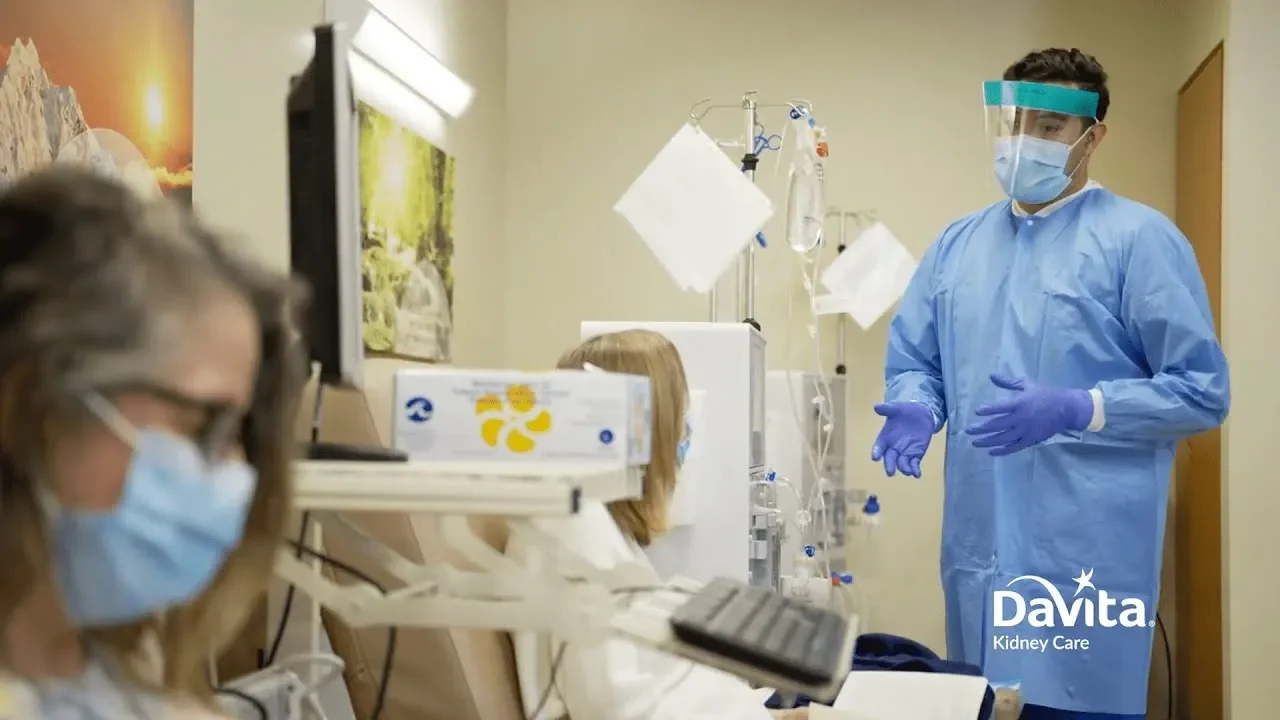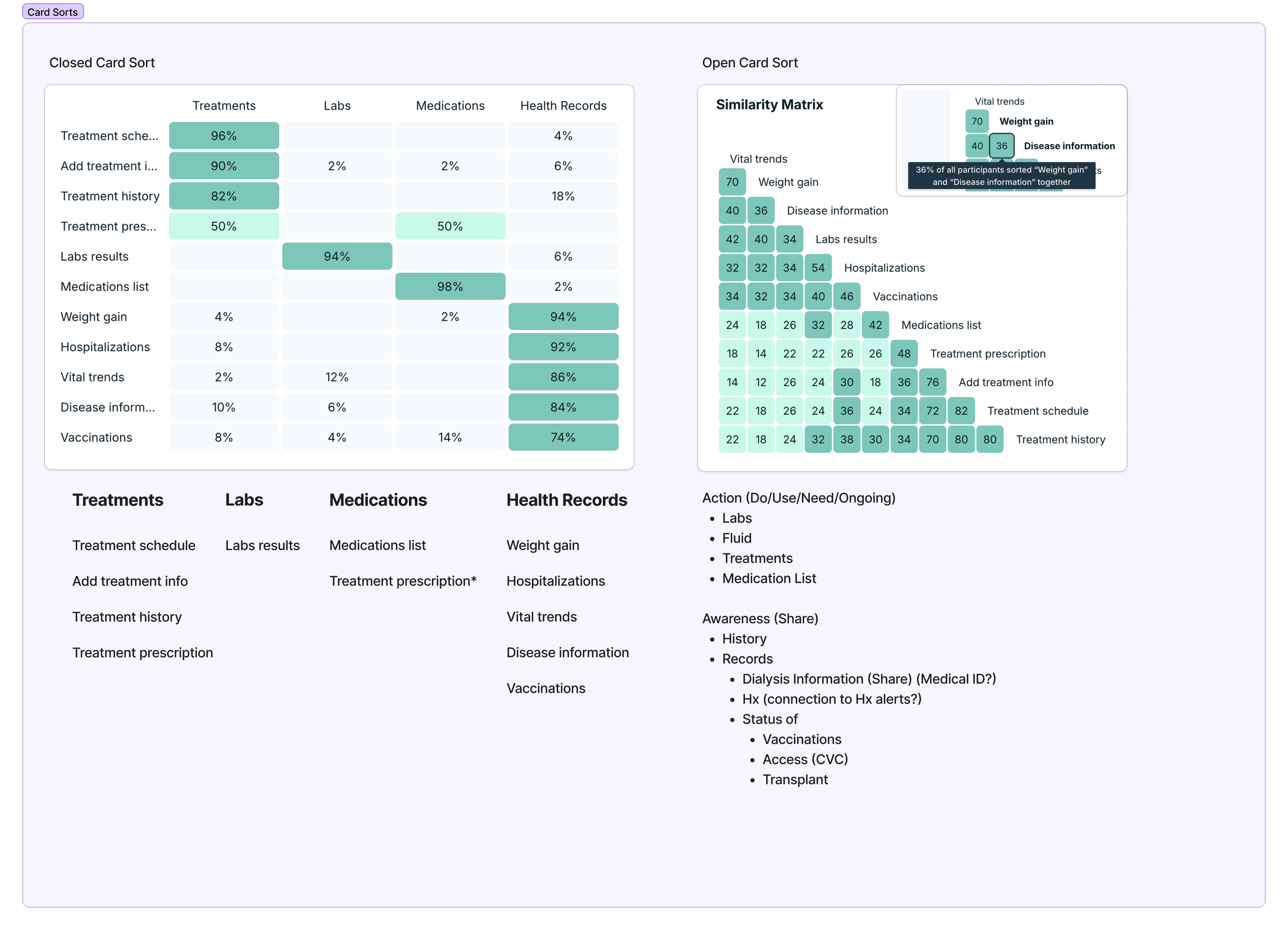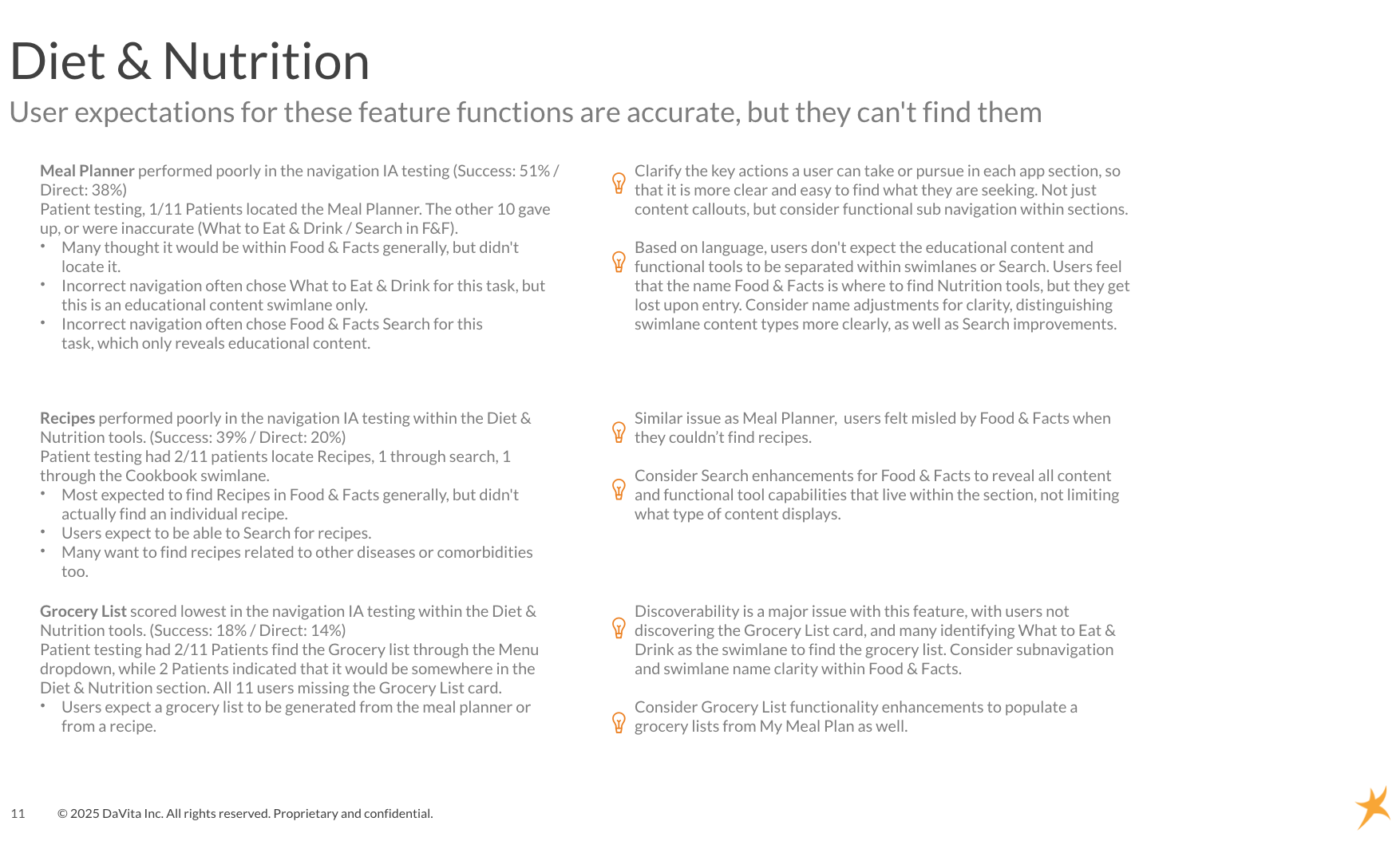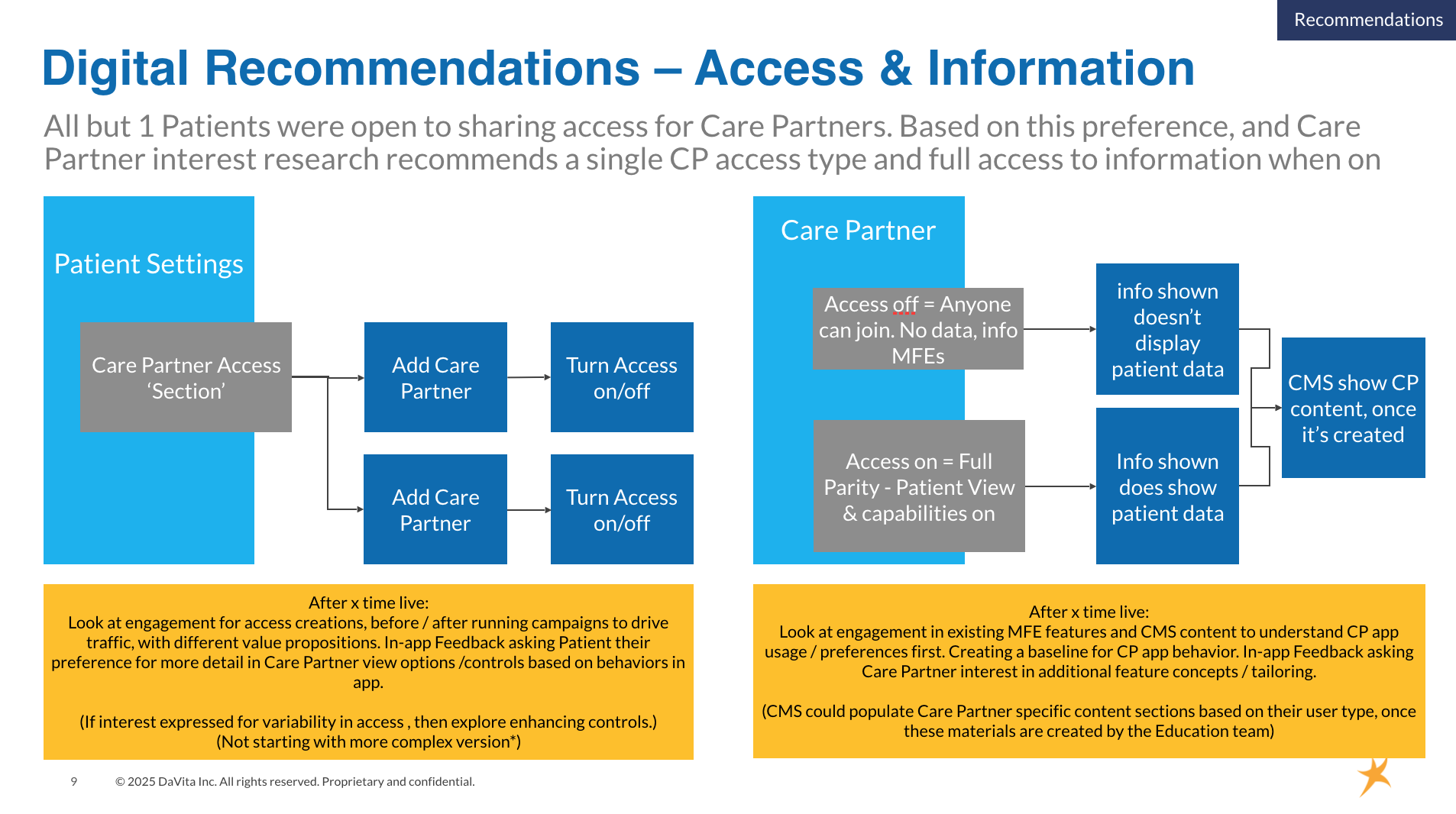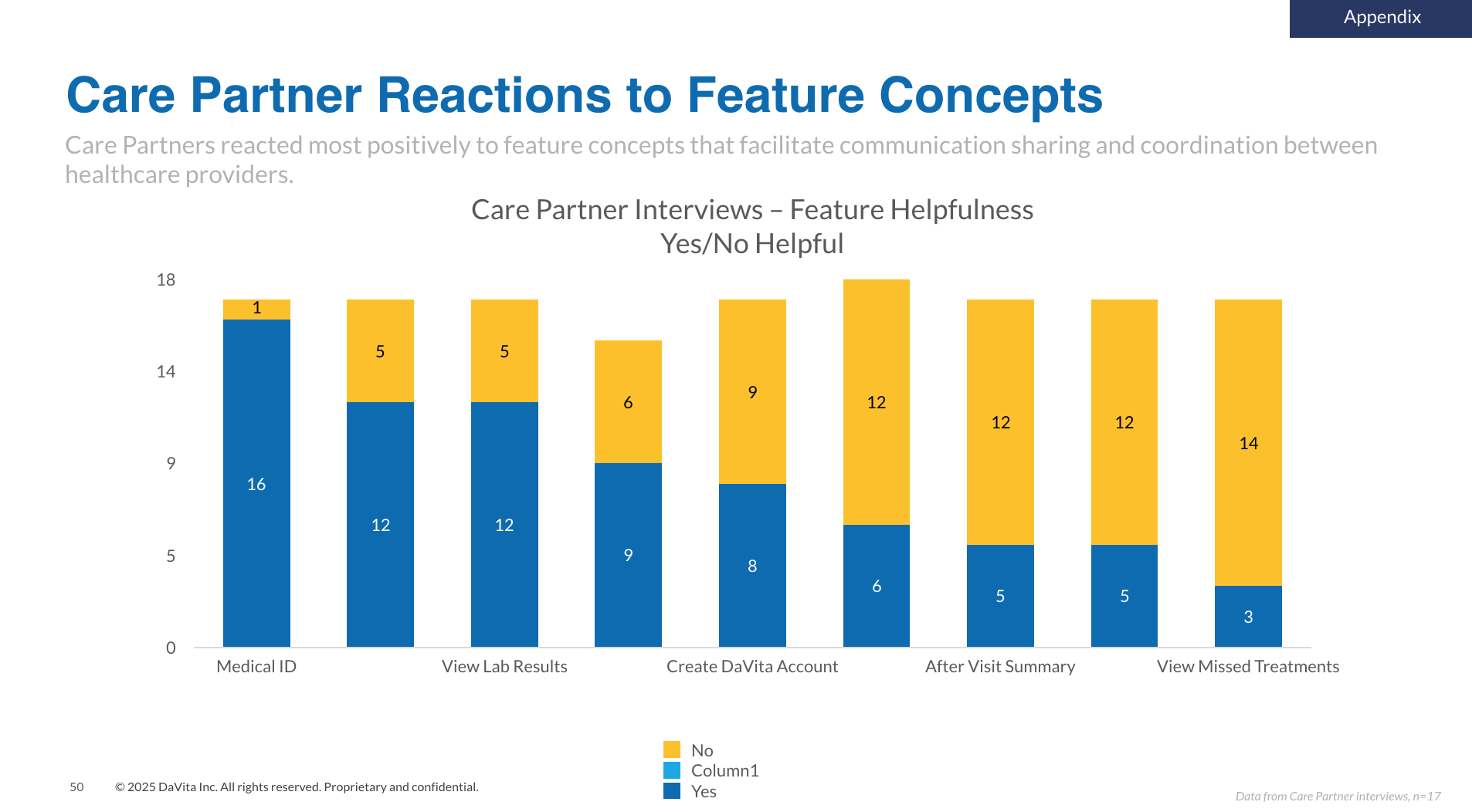DaVita Kidney Care
Navigation: Information Architecture
Background: Prior research from indirect discussions about the DaVita patient portal revealed navigational issues in discovering key features and resources essential to the patient experience. Patients were frustrated when they couldn’t find these features, or were completely unable to organically. This led to low satisfaction with the platform and blocked a large segment of the patient population from empowering themselves on their healthcare journey.
My Role: I lead the research for this initiative, starting with discovery and alignment with the product owners and designers to fielding and analysis.
Objectives: Understand how research participants complete specific navigation-based tasks in mobile and web experiences because there is evidence that there are usability issues in the navigational structure of the patient portal that are impacting patient success.
This is a result from one of the click tests we ran with remote participants. This specific ask here was to click on where they think they would be able to create a grocery list. The groups in green are the UI elements on the page where we designated as correct answers, the red were incorrect.
We conducted several task analyses throughout the patient portal to understand overall clarity of its current state using common tasks and tasks that our product team determined to be high priority.
This is a chart of the results from all of our click tests and task analyses. We measured success rate of each task - whether or not the participant was able to successfully complete a given task, and directness - how direct or indirect was the route that they navigated to complete the task.
As a result of the initial tests, we worked produced three alternative versions of the current navigation, and tested those separately via a between-participant design.
The two charts here are results from both open and closed card sorts. Participants were tasked with organizing the features from the patient portal in defined categories in the closed cart sort group, and undefined categories in the open card sort group.
This provided a mental model on where users think they would be able to find these key features within the experience.
This is the Figjam workspace we created to review findings and brainstorm with design and product. This is includes everything from the current state of the patient portal, to product defining their requirements, results from our card sorts and click tests, as well as the different versions of the navigation structure that our designers organized.
The final deliverable was a research readout to our product and design leadership. Our methods provided direction for the product team to determine based off the research where to make changes in the product’s current navigation.
This is a snapshot of the breakdown of findings for the features living with the “Diet & Nutrition” experience in the portal.
Care Partners: An ethnographic field study
Background: Care partners are a non-clinical person in a patient’s life that supports them in their care in some way. Care partner support is associated with several beneficial patient outcomes, such as improved self-management behaviors, compliance and psychosocial adjustment to treatments, and quality of life, as well as decreased mortality risk, treatment complications, anxiety and depressive symptoms, and odds of 30-day hospital readmission.
My team and I were tasked with approaching this topic with a wide net to understand as deeply as possible about the care partner role and we can ultimately support them from a product perspective.
My Role: Conducted research in the field at our clinics with patients, clinicians, and care partners, as well as secondary research regarding care partner support in the healthcare space. The field research included in-depth interviews at clinics around the country with hundreds of participants.
Objective: Build an understanding of care partner volume and involvement amongst our patients, confirm how care partners influence actions and key health outcomes, investigate the challenges that care partners face alongside those with kidney disease, and propose ideas for how to better serve care partners and improve health outcomes.
Through our discussions with patients and clinicians, we categorized the types of care partners that serve our patients, and estimate the distribution of each category of care partner. This provided the product team with insights not yet observed previously.
One of the most important takeaways from this research was that care partners need to have access digitally to all of or almost all of the same health information that patients have access to.
This is crucial because information from the clinic is not always shared directly with the care partner, and often times the patient can forget and misunderstand what is communicated to them in the clinics when under treatment. By providing care partners with this information digitally, it increase their ability to respond and care for their partner.
To better understand the care partner role from all angles, we spoke to nurses, social workers, and dietitians who speak directly to care partners to understand where they think care partners can have the biggest impact on patient outcomes.
We shared what features exist currently for patients and asked care partners how helpful those features might be for them. Most of the positive sentiment was based around feature that facilitate communication sharing coordination between healthcare providers.
As part of our efforts to express in detail the role of care partners, we collected and shared quotes from our interviews that underlined their main duties, burdens, and emotions, and where they said they find value in a digital experience tailored to their needs.
Transplant Journey Map: A detailed visualization of the patient journey of preparing for and finding a kidney
There are several clinical and behavioral processes that a typical patient will have to undergo throughout their dialysis journey, all of which require many complicated steps over the course of months to years. Getting on the kidney transplant list is one of those processes many patients choose to pursue from the beginning of their dialysis journey.
I created the transplant list journey map below to blueprint this process as a key asset for our product team. The goal of our product team when approaching a topic like transplant is to understand where we can support as a digital team when looking at the entire journey, and by using this type of journey map, they can pinpoint areas where a digital tool and feature can help serve patients and care teams.

